I have a little issue with calculating coordinates. Given are airfoil profiles in two lists with the following exemplary coordinates:
Example:
x_Coordinates = [1, 0.9, 0.7, 0.5, 0.3, 0.1, 0.0, ...]
y_Coordinates = [0, -0.02, -0.06, -0.08, -0.10, -0.05, 0.0, ...]
diagram 1:

The only known things about the profile are the lists above and the following facts:
- the first coordinate is always the trailing edge, in the example above at (x=1, y=0)
- the coordinates always run on the bottom/underside to the leading edge, in the example above at (0,0) and from there back to the trailing edge
- the profile is not normalized and it can exist in a rotated form
Now I want to determine
- the leading edge and
- the camber line.
Until now, I have always used the smallest x-coodinate as the leading edge. However, this would not work in the following exemplary profile, since the smallest x-coordinate is located on the upper surface of the profile.
diagram 2:

Does anybody have an idea, how I could easily calculate/determine this data?
edit
one full sample array data
(1.0, 0.95, 0.9, 0.8, 0.7, 0.6, 0.5, 0.4, 0.3, 0.25, 0.2, 0.15, 0.1, 0.075, 0.05, 0.025, 0.0125, 0.005, 0.0, 0.005, 0.0125, 0.025, 0.05, 0.075, 0.1, 0.15, 0.2, 0.25, 0.3, 0.4, 0.5, 0.6, 0.7, 0.8, 0.9, 0.95, 1.0)
(0.00095, 0.00605, 0.01086, 0.01967, 0.02748, 0.03423, 0.03971, 0.04352, 0.04501, 0.04456, 0.04303, 0.04009, 0.03512, 0.0315, 0.02666, 0.01961, 0.0142, 0.0089, 0.0, -0.0089, -0.0142, -0.01961, -0.02666, -0.0315, -0.03512, -0.04009, -0.04303, -0.04456, -0.04501, -0.04352, -0.03971, -0.03423, -0.02748, -0.01967, -0.01086, -0.00605, -0.00095)



